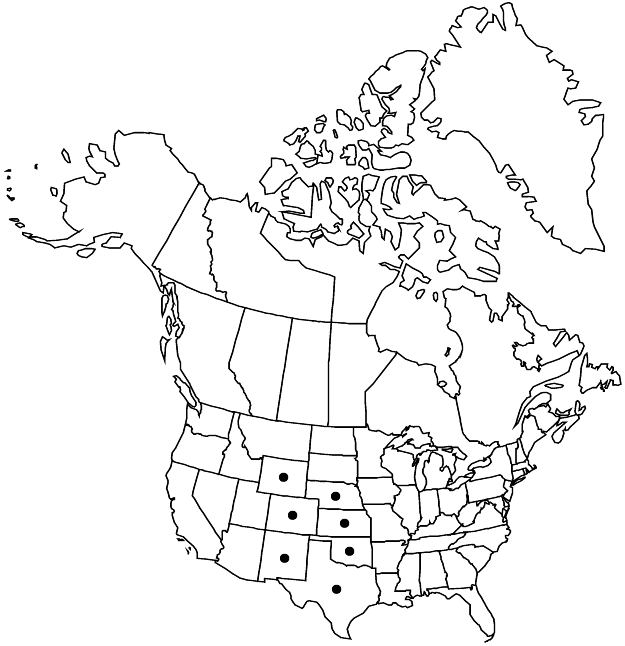Paronychia jamesii
Fl. N. Amer. 1: 170. 1838.
Plants perennial; caudex branched, woody. Stems erect to ascending, much-branched, 10–35 cm, scabrous, puberulent to pubescent, sometimes glabrous with age. Leaves: stipules lanceolate, 5–15 mm, apex acuminate, entire; blade linear, 7–25(–34) × 0.5–1 mm, leathery, apex obtuse to subacute or submucronate, pubescent to puberulent. Cymes terminal, 20–70-flowered, open, clusters 1–2 cm wide. Flowers 5-merous, short-campanulate, with enlarged hypanthium and calyx widening somewhat distally, 1.8–2.8 mm, puberulent, glabrous to hirtellous distally; sepals green to red-brown, veins absent, oblong, 1.3–1.8 mm, leathery to rigid, margins whitish to translucent, 0.05–0.1 mm wide, scarious, apex terminated by awn, broadly rounded, awn widely divergent, 0.4–0.8 mm, conic in proximal 1/2–2/3 with yellowish, scabrous spine; staminodes filiform, 0.6–1 mm; style 1, cleft in distal 1/3–1/6, 0.8–1.2 mm. Utricles ellipsoid-ovoid, 0.8–1 mm, smooth, glabrous.
Phenology: Flowering summer–fall.
Habitat: Limestone rocky ledges, slopes, hilltops, grasslands
Elevation: 500-2500 m
Distribution

Colo., Kans., Nebr., N.Mex., Okla., Tex., Wyo., Mexico (Chihuahua, Coahuila).
Discussion
We agree with B. L. Turner (1983b) in not adopting the four varieties of Paronychia jamesii that Chaudhri recognized.
Selected References
None.